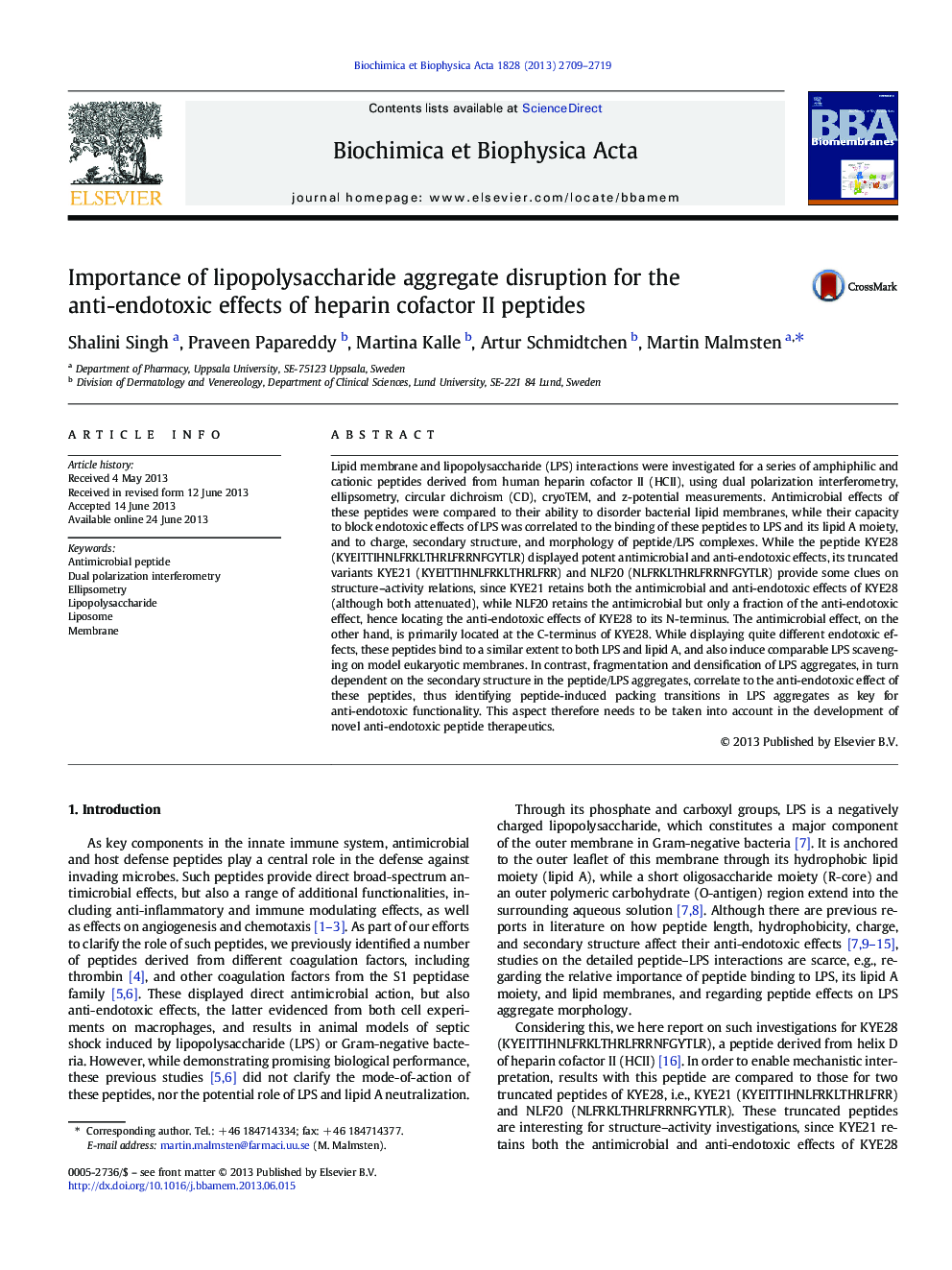| کد مقاله | کد نشریه | سال انتشار | مقاله انگلیسی | نسخه تمام متن |
|---|---|---|---|---|
| 1944315 | 1053203 | 2013 | 11 صفحه PDF | دانلود رایگان |

• HCII peptides were investigated regarding antimicrobial and anti-endotoxic effects.
• Detailed investigation of binding to membranes, LPS, and lipid A
• Preferential binding of HCII peptides to LPS over lipid membranes, and to lipid A within LPS
• Binding causes helix formation, important for anti-endotoxic effect.
• Related to peptide-induced disintegration and densification of LPS aggregates
Lipid membrane and lipopolysaccharide (LPS) interactions were investigated for a series of amphiphilic and cationic peptides derived from human heparin cofactor II (HCII), using dual polarization interferometry, ellipsometry, circular dichroism (CD), cryoTEM, and z-potential measurements. Antimicrobial effects of these peptides were compared to their ability to disorder bacterial lipid membranes, while their capacity to block endotoxic effects of LPS was correlated to the binding of these peptides to LPS and its lipid A moiety, and to charge, secondary structure, and morphology of peptide/LPS complexes. While the peptide KYE28 (KYEITTIHNLFRKLTHRLFRRNFGYTLR) displayed potent antimicrobial and anti-endotoxic effects, its truncated variants KYE21 (KYEITTIHNLFRKLTHRLFRR) and NLF20 (NLFRKLTHRLFRRNFGYTLR) provide some clues on structure–activity relations, since KYE21 retains both the antimicrobial and anti-endotoxic effects of KYE28 (although both attenuated), while NLF20 retains the antimicrobial but only a fraction of the anti-endotoxic effect, hence locating the anti-endotoxic effects of KYE28 to its N-terminus. The antimicrobial effect, on the other hand, is primarily located at the C-terminus of KYE28. While displaying quite different endotoxic effects, these peptides bind to a similar extent to both LPS and lipid A, and also induce comparable LPS scavenging on model eukaryotic membranes. In contrast, fragmentation and densification of LPS aggregates, in turn dependent on the secondary structure in the peptide/LPS aggregates, correlate to the anti-endotoxic effect of these peptides, thus identifying peptide-induced packing transitions in LPS aggregates as key for anti-endotoxic functionality. This aspect therefore needs to be taken into account in the development of novel anti-endotoxic peptide therapeutics.
C-terminal peptides from heparin cofactor II interact with phospholipid membranes, causing membrane rupture and antimicrobial effects. They also bind to bacterial lipopolysaccharide (LPS) and its lipid A moiety. Anti-endotoxic effect is correlated to peptide-induced disintegration of LPS aggregates.Figure optionsDownload high-quality image (89 K)Download as PowerPoint slide
Journal: Biochimica et Biophysica Acta (BBA) - Biomembranes - Volume 1828, Issue 11, November 2013, Pages 2709–2719